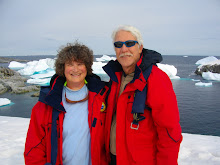Michael Duffy was a member of Greenpeace. Being an analytical person he started asking where they got their alarming statistics. The source was a distinguished Harvard professor. But on further inspection the only conclusion was that the distinguished professor was just making things up.
Sydney Morning Herald AustraliaWhen I was a member of Greenpeace in the 1980s I received a request for money supported by the claim that about 30,000 species each year were becoming extinct. Until then I'd been an unsceptical environmentalist, but this sounded like an awful lot, so I called Greenpeace to ask how they knew. I made several queries but they didn't seem very interested. Finally they told me they didn't know where the figure came from, and I resigned from the organisation.
I later found the figure almost certainly came from the work of the biologist Edward Wilson, originally an expert on ants...
Based on this and his invention of the concept of "biodiversity", he later announced the world was experiencing "one of the great extinction spasms of geological history" and losing up to 100,000 species a year. Wilson's claims are one of the mainstays of the modern environmental movement, and a foundation of government environmental policies around the globe.
This experience with Greenpeace gave me a long-running interest in the way much environmental science involves mathematical formulas or computer models. The most famous recent examples of these are the "general circulation models" used to produce predictions of future climatic conditions. An important book has just been published by an Australian academic that raises the question of whether this should be regarded as science at all.
The book is Science And Public Policy (Edward Elgar Publishing), and the author is Professor Aynsley Kellow, the head of the school of government at the University of Tasmania. Kellow believes that environmental science has often been corrupted by the good intentions of its practitioners, so that it consists of wishful thinking rather than facts and provable theories. Perhaps the first big case of this was the notorious Limits To Growth study published by the Club of Rome in 1972, based on computer modelling and subsequently disproved. One might expect the quality of models to improve, but since then they have been used for all sorts of predictions, and there is little evidence they have got much better.
Despite this, the predictions made by such models are now contained in scientific papers published in leading journals,
Science and Public Policy by Prof. Aynsley Kellow
At Amazon. Cost is $110.

